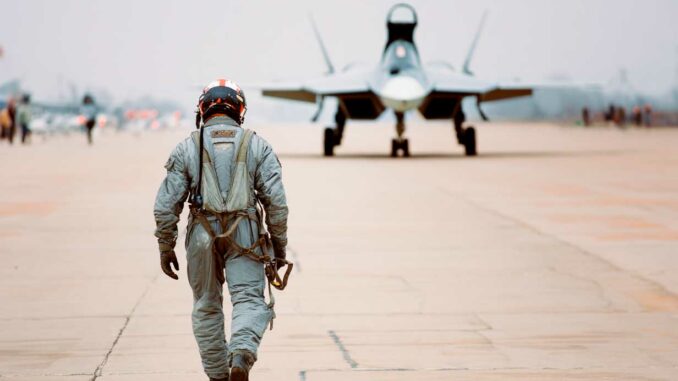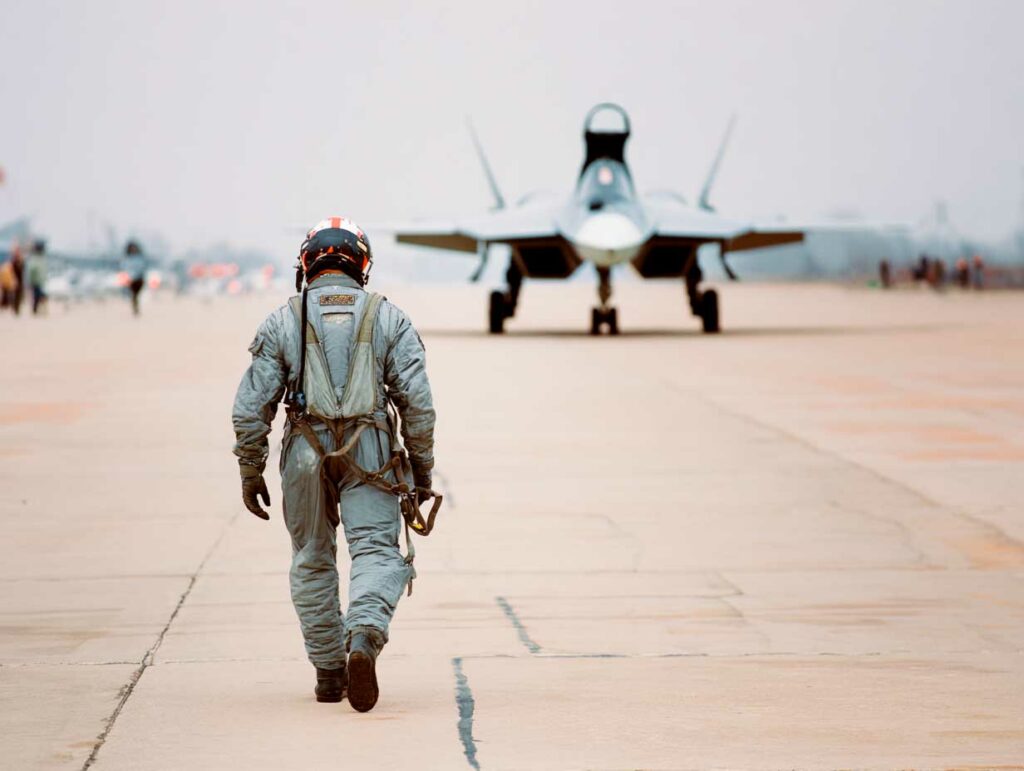
India has decided not to purchase the Russian Su-57 in favor of its AMCA stealth fighter, in response to Pakistan’s growing air power with the Chinese J-35.
On June 23, 2025, India officially announced the suspension of all plans to acquire the Su-57E, the export version of the Russian stealth fighter developed by Sukhoi. This decision, which had been postponed for a long time since the joint FGFA program was abandoned in 2018, comes amid a strategic overhaul of India’s air doctrine. The Ministry of Defense in New Delhi has chosen to focus its resources on the Advanced Medium Combat Aircraft (AMCA), a national program for a fifth-generation fighter jet.
The decision comes as Pakistan is set to receive 40 Chinese J-35 aircraft starting in the summer of 2025. These deliveries, combined with early training for Pakistani pilots in China, are reigniting technological and operational tensions in the region. In response, India is strengthening its industrial sovereignty and seeking to avoid any strategic dependence on foreign suppliers, particularly Russia.
This decision calls into question Russia’s export ambitions for its Su-57, which is already limited in series production, and highlights the new priorities of the major regional powers: national capability, stealth, interoperability, and logistical autonomy. India is now investing heavily in a locally developed solution tailored to its geographical, industrial, and diplomatic specificities.
India’s decision: abandoning the Su-57 in favor of the AMCA
The announcement that India has abandoned its interest in the Su-57E is public confirmation of what many analysts had been anticipating for several months. Since the breakdown of the FGFA program in 2018, India had not engaged in concrete negotiations with Russia on a direct acquisition of the Su-57. The June 2025 statement therefore formalizes a clear strategic direction: to invest primarily in the AMCA program.
The Su-57E fighter, although presented as a fifth-generation fighter, suffers from industrial delays, production limitations, and a lack of operational validation. To date, the Russian Air Force has only 20 to 22 units delivered, with a target of 76 units by 2028, according to data provided by the UAC (United Aircraft Corporation). The E model, intended for export, has not yet found any firm foreign customers.
At the same time, the Indian AMCA program, led by the DRDO (Defense Research and Development Organization) and HAL (Hindustan Aeronautics Limited), has been gaining momentum since 2023. The project plans for the first flight of a prototype by 2026, with entry into service around 2031–2032. India has allocated more than €2.5 billion to this program, with successive phases of testing, modeling, and integration of proprietary technologies, particularly for the AESA radar and engine.
The decision not to import the Su-57E therefore allows India to focus its resources on sovereign development capabilities, with the aim of meeting its specific needs: multi-role combat, air superiority, deep stealth penetration, and integration into an increasingly digitized network-centric environment.
The regional context: strategic pressure from Pakistan’s J-35
One of the triggers for India’s decision was the confirmation of deliveries of 40 J-35 aircraft to Pakistan, announced in April 2025. The J-35 (also known as the FC-31 or Gyrfalcon) is a Chinese fifth-generation twin-engine stealth fighter designed for the air force and navy. It can carry long-range PL-15 air-to-air missiles and is equipped with an AESA radar, an internal weapons bay, and an integrated optronic system.
The Pakistani-Chinese contract, estimated at €3.6 billion, also includes a phase of training Pakistani pilots in China, which will begin in January 2025. The J-35 could enter operational service in Pakistan before 2027, creating a potential technological imbalance with India’s Rafale and aging Su-30MKI aircraft.
In response, New Delhi believes that only a domestic, long-term solution, such as the AMCA, would compensate for this new capability gap. Imported models, including the Su-57E, do not allow for complete control of the supply chain or rapid adaptation to scenarios specific to the South Asian theater (high altitude, heat, mountainous terrain).
The J-35, like the J-20 already in service in China, reflects Beijing’s growing technological ambition, which now exports stealth fighters to strategic partners. For India, accepting the Russian Su-57E would mean integrating a foreign solution that is already out of step with its real needs, particularly in terms of passive and active stealth.

The consequences for the Russian Su-57 fighter industry
India’s refusal is a commercial and political setback for Russia. The Su-57, announced in 2010 as the successor to the Su-27, is struggling to establish itself on the international market. The lack of firm customers, apart from Russia itself, weakens the industrial profitability of the program. Without exports, the unit cost remains high: between €70 and €80 million according to available estimates.
The export options considered by Moscow—Algeria, Vietnam, Iran, and now India—have all encountered technical, logistical, or political obstacles. India’s rejection also weakens Russia’s strategic argument that the Su-57 is an alternative to the F-35. In the absence of any real combat demonstration and with very slow production, this positioning is becoming less and less credible.
India’s departure also deprives Sukhoi of a co-development partner. The failure of the FGFA program has reduced the ambition of a twin-engine Su-57 adapted to South Asian conditions. In the short term, Russia could compensate by promoting its attack drones such as the S-70 Okhotnik-B, but this does not meet the demand for a manned fighter aircraft capable of stealth penetration and long-range air superiority.
Russia could try to offer the Su-57E to customers under Western sanctions (Iran, Myanmar, Venezuela), but the lack of technological integration and multiple dependencies (electronics, radars, materials) make these sales uncertain. By rejecting this option, India confirms the gradual decline in the export competitiveness of the Su-57 in high-tech markets.
The prospects for the AMCA program and India’s industrial strategy
The AMCA is now India’s strategic priority in the field of fighter aircraft. The project is based on the design of a multi-role stealth fighter capable of interdiction, air defense, reconnaissance, and ground attack missions. India aims to produce at least 140 to 180 units over a period of 15 years.
The AMCA airframe will feature a stealth design with an internal weapons bay, a composite structure, and a modular architecture. The AESA radar developed locally by the DRDO will be coupled with an electronic warfare and signature management system. The engine, initially of foreign origin (General Electric F414), will eventually be replaced by a domestically produced engine currently under development with Safran or Rolls-Royce.
The program provides for a two-seat configuration for networked warfare, drone control, and air defense suppression missions. This architecture is intended for integration into a future Indian air combat system based on interoperability between drones (CATS Warrior), fighters, satellites, and ground-based radars.
Economically, the AMCA is already generating dozens of partnerships with local SMEs in components, machining, electronics, and embedded systems. HAL estimates that 70% of components could be produced in India by 2032, which would reduce dependence on imports and secure the supply chain in the face of international tensions.
This strategy is part of the “Atmanirbhar Bharat” (strategic autonomy) initiative, which aims to strengthen the national industrial base. The AMCA will become the central axis of this policy, with long-term technological and economic benefits.
War Wings Daily is an independant magazine.